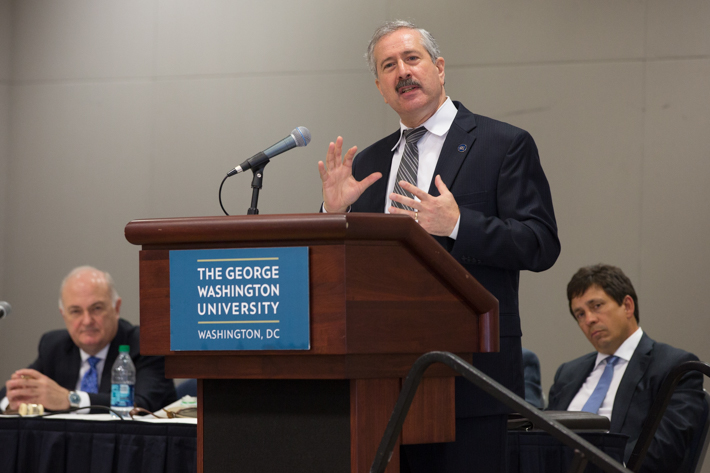As the university has previously announced, a decline over several years in graduate enrollments has created a budgetary shortfall that is being addressed through efforts to rebuild enrollments and, in the meantime, to reduce expenditures, primarily in units in the central administration.
Those units have been asked to cut their operating costs by 5 percent. They are achieving these reductions by a variety of means, including implementing measures to lower energy expenses, enhancing competitive pricing on contracts, reducing overtime expenses and making some limited adjustments to services, with priority placed on maintaining services that are core to supporting the educational and research mission of the university.
Some units in the central administration are also saving costs by restructuring their operations. Restructuring plans implemented by individual units vary, with some deciding to eliminate existing and/or vacant staff positions. Some units have also realigned certain functions to enhance operations with fewer resources. Administrative unit managers notified 46 current employees today that their positions have been eliminated. These employees have been offered transition assistance.
“Reductions in operating budgets pressed some administrative units to reduce current staff. These decisions were made by units carefully with much forethought,” said Vice President for Human Resources Sabrina Ellis. She continued, “We want the best for all our employees, and we will work to help those in transition as well those in newly restructured units.”
At the same time, the deans and directors of the university’s schools and colleges have been working aggressively with faculty and staff to recruit graduate students for existing graduate programs as well as developing new programs that will bolster enrollments in years to come. In addition to implementing strategies to boost enrollment, they have been working to achieve operational savings to balance their budgets.
Together, the efforts by the university’s schools, colleges and administrative divisions are expected to reduce the budget gap for FY16 and to bring expenses in line with revenues if enrollment projections for fall 2015 are achieved.
These actions build on previous efforts by the university to reduce expenditures. The university instituted a central staff position approval process that delays staff hiring and increased the required delay in filling approved positions from three to six months. Schools and divisions were also asked to reduce travel and training expenses for FY 2015.
As President Steven Knapp emphasized in his message to the university community last month, “it is critically important that we not allow our current budgetary problem to prevent us from continuing to fulfill our mission or from realizing the aspirations embodied in our strategic plan.”
“I want to express my personal gratitude to all who are working so diligently and creatively to help us make our way through these challenges and to keep the George Washington University on track to achieve the stature we know it will enjoy as it enters, in just a few years, its third century.”





